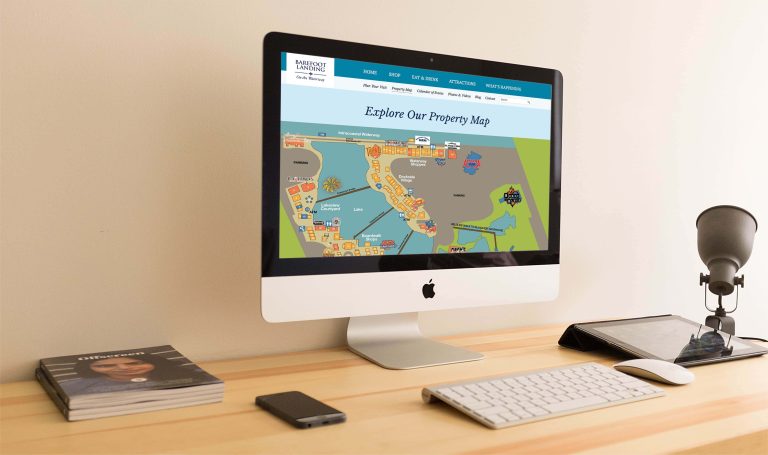
Conversion Rate Optimization Best Practices
What is CRO?
Conversion Rate Optimization (CRO) is the practice of fine-tuning your website to make it more appealing, accessible, and valuable to visitors. Ideally, the higher your CRO, the more website visitors convert into subscribers, customers, and/or readers. To get a higher conversion rate, you need to implement some of the Conversion Rate Optimization best practices. It could mean optimizing your website’s design, content, logo, user experience, and user interface.
CRO matters if you want your website to become a valuable resource to audiences seeking your product or service. It’s your job to ensure your website stays up-to-date, valuable, and user-friendly for everyone, including people with disabilities.

How to Calculate Conversion Rate
To calculate your website’s leads vs. conversions rate, you need to determine the percentage of website visitors who take the desired action. The desired action could involve purchasing, signing up for a newsletter, or filling out a contact form. By tracking conversion rates, you can identify areas for improvement, optimize your website, and ultimately enhance its ability to meet your objectives and get enhanced conversions for leads.
In simpler terms, you could use the following formula to calculate your website’s conversion rate:
Conversion Rate = Number of Conversions/Total Number of Visitors × 100%
What is the average conversion rate for a website?
The average ecommerce conversion rate for all industries is 2%, and an excellent conversion rate amounts to around 10% or higher. According to Statista, the highest average conversion rate by industry in the first quarter of 2023 was food and beverage, at 3.1%, followed by health and beauty, at 2.9%, and skincare, at 2.4%.
Several factors can influence these rates, including website design, SEO optimization, user experience, competition, and the nature of the desired action. Competition is important because you need to understand how well the “enemy” forces are doing to create a frame of reference. Knowing industry averages helps you gauge whether your site performs below or above industry standards. Most of all, it guides optimization efforts. You can set realistic goals for improving your website’s CRO.
Best Practices for Optimizing Conversion Rates
1. Well-defined target/buyer persona
Understanding your audience is paramount for optimizing conversion rates. A well-defined target or buyer persona is a compass that helps you tailor your website and content to address specific needs and preferences.
To create a helpful buyer persona, consider asking your users, visitors, customers, etc., how they feel! You can conduct surveys, feedback forms, or social media interactions to gather info about their demographics, behaviors, pain points, and aspirations. By knowing your audience intimately, you can give them what they want: craft compelling offers that resonate with them, increasing the likelihood of conversions.
2. Analyze your competitors’ websites; don’t copy them
Studying competitors’ websites can provide valuable insights into industry trends, customer expectations, and effective strategies. For a successful competitor analysis, you need to dig deeper: look for strengths in their design, content, and user experience, and identify areas where they fall short. You can use tools such as website analytics and SEO analysis such as Google Analytics (GA), Ahrefs, or Semrsush.
Competitive analysis is valuable for optimizing conversion rates, but the key is not to replicate what your competitors are doing but rather to understand why it works. If you figure out what makes a certain website popular, consider whether it’s a good idea for you. For instance, a slider website design looks pretty when showcasing your portfolio but is detrimental to an eCommerce page.
3. Apply UI & UX rules defined for the niche your website is in
User experience (UX) and user interface (UI) design influence conversion rates. Tailoring these design principles to your specific niche is essential for creating a compelling and user-friendly environment that keeps a high conversion rate of leads to sales. Let’s take, for instance, an eCommerce website specializing in athletic shoes. To increase this specific online store conversion rate, you’d need comprehensive product details, including performance specs and athlete endorsements! You could also offer quizzes for tailored shoe recommendations based on users’ preferred sports and fitness levels.
To optimize your website’s UI and UX for your niche, begin with a checklist of general UI/UX design tips to improve website conversions. This always includes clear navigation, responsive design, fast load times, and intuitive layouts. However, go beyond these basics by delving into niche-specific user research, gathering feedback, and analyzing user behavior on your site.

4. Use direct and clear content and improve it over time
Effective content is pivotal in guiding and converting users to your website. It bridges your audience’s needs and your offerings, making clear and direct communication essential for successful conversions.
Consider various content types, such as blogs, videos, and infographics, to engage your audience effectively. Each type has its strengths in conveying information and can cater to different audience preferences: videos work for quick flashes of how a blouse moves in the wind, like a fashion website. Blog posts, on the other hand, help businesses establish authority as experts capable of providing valuable advice.
For optimal content, apply E-E-A-T (Experience, Expertise, Authoritativeness, and Trustworthiness)! These principles enhance the content quality and boost its visibility in search engines. Over time, continually improving your content by staying updated on industry trends, gathering feedback, and addressing user needs ensures that your website remains a valuable resource that guides users toward conversions.
5. A/B Testing
A/B testing, or split testing, is a powerful method for optimizing conversion rates by doing a little experiment. You conduct this experiment by comparing two different content or design ideas to determine which results in a higher conversion rate of leads to sales. For instance, you can test a modified call-to-action (CTA) button copy or color against the current one to improve click-through rates.
Action Steps:
- Define the Goal: Clearly state your goal, like a 10% increase in email sign-ups. Also, testing one thing at a time usually makes sense: only the design or copy changes to a sign-up CTA, for instance. In this way, you can be clear on which aspect of your idea leads to success.
- Track User Behavior: Use tools like Google Analytics to monitor user actions related to your goal, such as button clicks or form submissions.
- Apply Statistical Significance: Ensure that you obtain results that are not random but have a cause behind them so that you can make informed decisions.
6. Rebuild your website
Occasionally, a complete website overhaul becomes necessary when your current site struggles to meet its intended goals. For instance, if your website has an outdated design, slow loading times, or a complex navigation structure, it may deter users and result in lower conversion rates.
When executed thoughtfully and with clear objectives, a website overhaul can lead to substantial improvements in conversions and user engagement, ultimately driving your business forward.
Before and after rebuilding your website, make sure to use the following steps for optimal results:
- Evaluate the Need: Assess your website’s performance, looking for signs like high bounce rates, low user engagement, or declining conversion rates. If these issues persist, it might be time for a rebuild.
- Set Clear Goals: Define your objectives, whether it’s increasing sales, improving user experience, or enhancing brand image.
- Plan and Redesign: Work with designers and developers to create a modern, responsive design that aligns with your goals. For example, revamp your product pages for a more intuitive shopping experience.
- Optimize Content: Revisit and optimize your content to ensure it’s engaging and aligns with your target audience’s needs.
- Test and Refine: After relaunching, conduct A/B testing to measure improvements. For instance, test the new product page layout against the old one to gauge conversion rate changes.
- Monitor Post-Launch: Continuously monitor user behavior and website performance using tools like Google Analytics and Google Search Console. For example, track the click-through rate on your redesigned CTA buttons to gauge improvements.
Continuous optimization is the key to maintaining and improving your website’s performance over time. As digital landscapes evolve and user preferences change, staying agile and adapting is essential. Regularly assess your website, gather user feedback, and implement improvements to increase conversions.
To excel in conversion rate web design and optimization, staying up-to-date with the latest best practices and trends is vital. It’s important to find ways to prioritize the user experience, and convenience is the name of the game: the quicker and the easier you make the conversion process, the more likely it is to work. Stay curious, learn from your data, and be willing to make data-driven adjustments to your website.
For personalized advice and solutions, reach out to the MANE Digital team. A state-of-the-art web design, development, and conversion rate optimization agency, we can help you prep your website for growth. We apply the Growth Driven Design approach, which enables us to achieve goals and conversions through an iterative and agile web design process. We provide expert talent for search engine optimization services, UX and UI design, website development, eCommerce development, and many others. Our focus is on WordPress and WooCommerce, and we covered projects from education, information technology, social networking, marketing, entertainment, architecture, and other fields.




